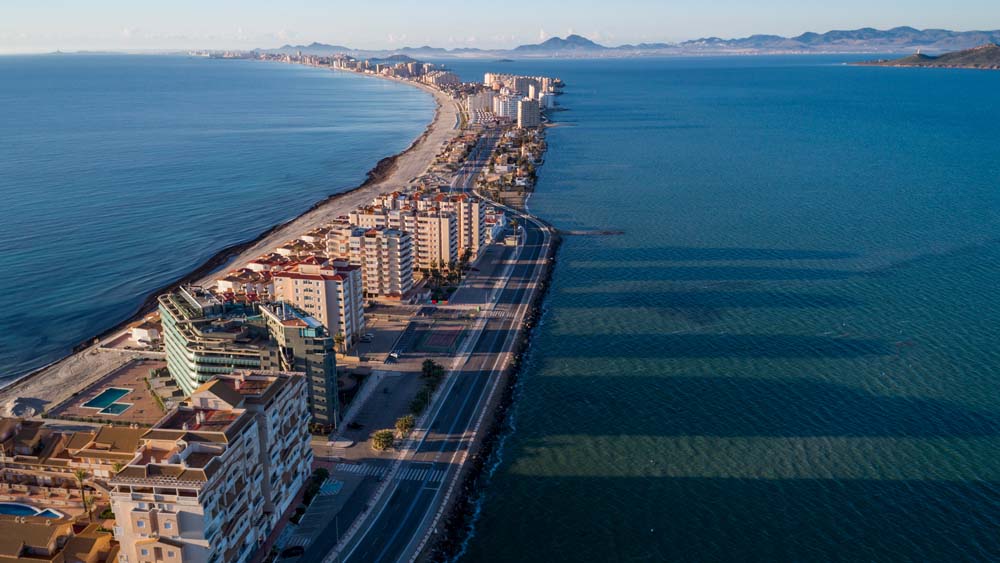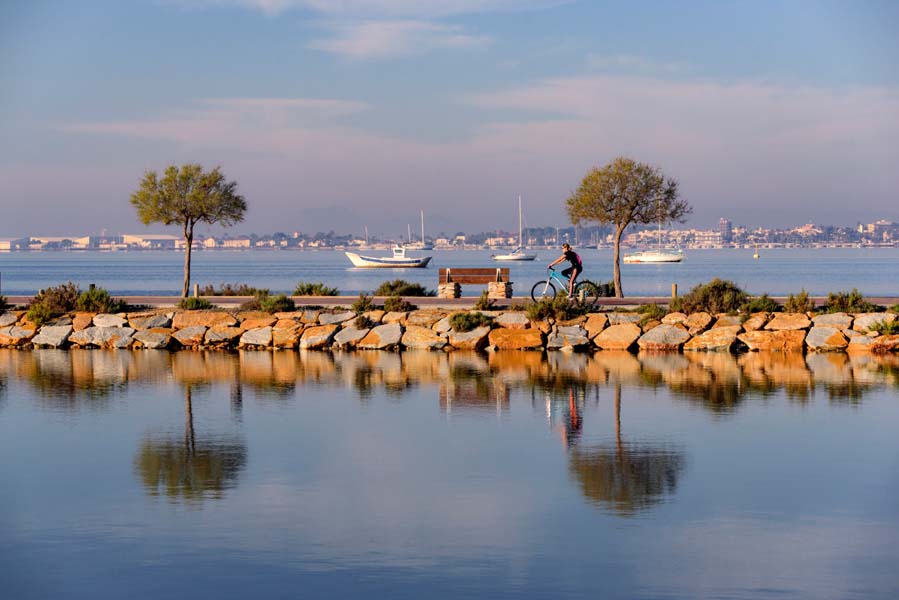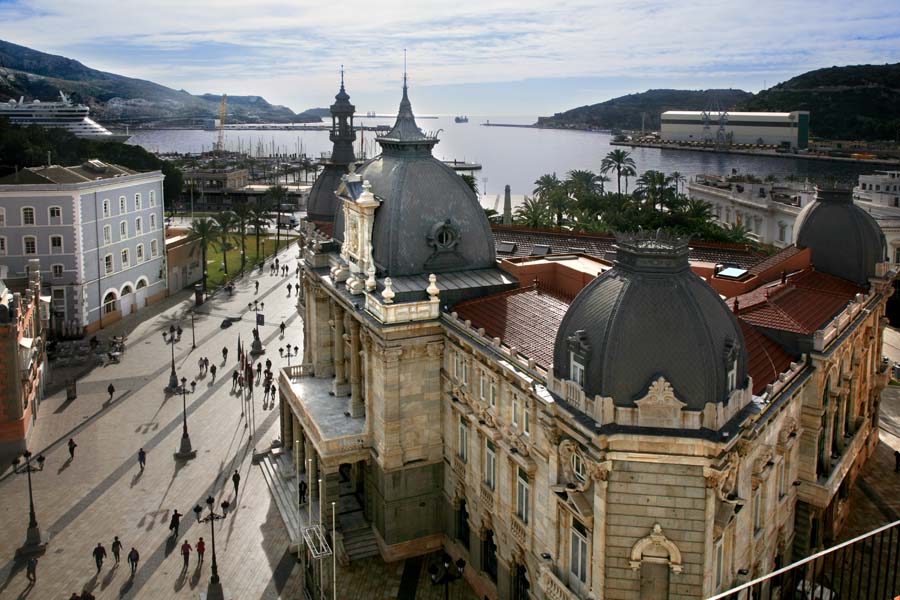From the Mar Menor to Torre Pacheco and across to Cartagena, the Region of Murcia has golf courses for all tastes. All within a radius of 35 kilometres, their designs are the work of names such as Jack Nicklaus, Dave Thomas and Severiano Ballesteros. The result is a wide variety of courses and one of the most popular areas for golfers to visit.
The Region of Murcia is golf and much more. The over 300 days of sunshine a year is the reason it is known as the Costa Cálida. Here is a destination that moves from the fertile nature inland to the beauty of its beaches, from the heritage of its cities to the wealth of the local cuisine.
The Costa Cálida is a destination washed by two seas: the Mediterranean Sea and the Mar Menor, which makes it an ideal setting for any getaway. Its dream climate and the chance to indulge in watersports are two of the good reasons to travel to this coast, one of the least explored and least crowded areas of the Mediterranean.
La Manga del Mar Menor
As you journey along its coastline, you will soon happen upon a unique feature of its landscape – the 21-kilometre spit of sand separating its two seas, the Mediterranean and the Mar Menor, known as La Manga. Europe’s largest saltwater lagoon, the Mar Menor is a big little sea; warm, calm and shallow. It is a true paradise 365 days a year. Here sailing, kitesurfing, canoeing and paddle surfing are popular.
Nature’s five senses
Feel time stand still, focus on your wellbeing and the goodness of nature – the Region of Murcia offers all kinds of experiences for an unforgettable trip amid unique natural surroundings. Horse yoga, star gazing, walking therapy and forest bathing are some of the experiences with nature to connect your five senses in the region.
The wetlands of Salinas y Arenales de San Pedro nature reserve
One of those perfect places to escape the crowds, this reserve for migratory birds is a paradise for birdwatching fans. Here you can see flamingos, which are the indisputable stars of these wetlands. Spring and autumn are the best times to visit, but the greatest number of these birds can be seen at the end of July.
Cities packed with history
For those who like cities with plenty of history, Murcia and Cartagena are two of the biggest reasons to come to the Region of Murcia. In Murcia, the Cathedral of Santa María La Mayor is one of the best examples of Spanish Baroque architecture and one of the most important buildings in the city. Its 93-metre bell tower is the second tallest in Spain, behind only the Giralda in Seville.
With more than 3,000 years of history, Cartagena has witnessed some of the most incredible chapters in history. Today, this Punic, Roman and military city with its ‘modernista’ style buildings, offers so much to see and do that it is no wonder it is one of the most captivating destinations in the Mediterranean. Its showpiece is the Roman Theatre, built in the time of the Emperor Augustus and now restored.
A paradise for scuba diving
The seabed of the Region of Murcia is a paradise for scuba diving due to its varied fauna and flora and the numerous historic shipwrecks in its waters, which have the highest amount of historic sunken ships in the Mediterranean.
The Costa Cálida has 17 diving centres where courses are offered both for beginners and for more-experienced divers.
Gastronomy
Food and drink with a strong local identity are among the hallmarks of the Region of Murcia. The 1,001 flavours to savour are sure to have any visitor pushing the limits of their gastronomic vocabulary with delicacies such as fishy ‘marinera’ finger snacks, baked octopus, ‘zarangollo’ eggy hors d’oeuvres or ‘arroz caldero’ rice dishes. And to top it all off, lemony dough ‘paparajotes’ for dessert accompanied by an ‘asiático’ coffee.
Wine also has its distinct regional identity. The wines from the higher plateau known as the Kingdom of Monastrell are authentic and famed for their quality, going perfectly with the gastronomic specialties of the Region of Murcia. Moreover, the region’s three official Designation of Origin wine districts – Bullas, Jumilla and Yecla – have routes certified by the Spanish Association of Wine Cities (ACEVIN). This means there is plenty of opportunity to taste the wines, visit wineries, stroll through vineyards and take part in many other activities to bring out the wine enthusiast in you.













